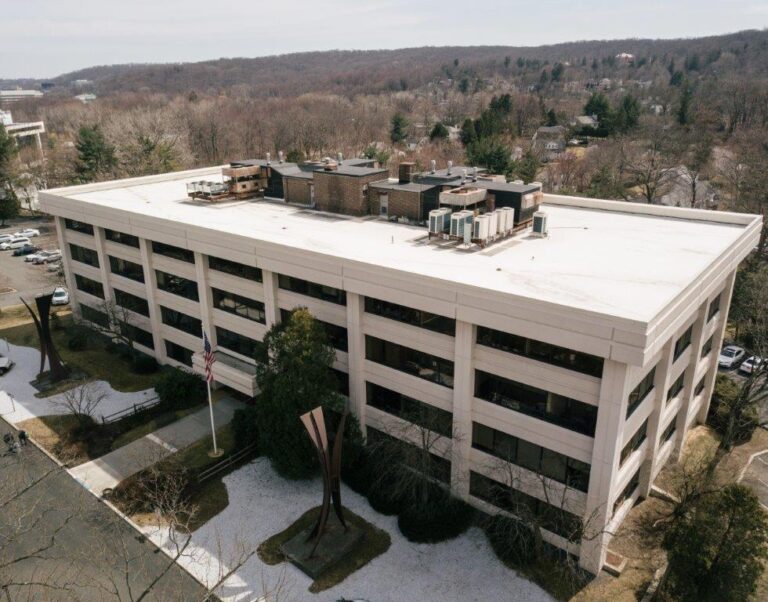The Coalition for Responsible Fire Protection, a nonprofit organization that promotes responsible fire protection through advocacy, education and guides and metrics for reducing environmental impact, has been working on a new guide and rating system to help the fire protection industry reduce its environmental impact. Titled Contractors Guide to Responsible Fire Protection, the pilot version was approved on November 12, 2012 by Coalition’s Board of Directors.
Similar to the LEED® rating system’s specific focus on buildings, this new guide provides a rating system with points and performance levels on how providers of fire protection products and services can plan and implement actions to reduce their organization’s overall environmental impacts and to have their achievements verified. It addresses reducing a broad range of organizational environmental impacts, and specifically addresses two very important issues for fire protection systems: (1) the tracking of types and amounts of fire protection systems and agents present in buildings and other fire protection applications; and (2) the recapture and recycling/reprocessing of fire protection systems’ materials, components and agents at the end system life.
The pilot version of the guide was released at the 2012 Greenbuild International Conference and Expo in San Francisco. The next step is to pilot test the guide. The Coalition is currently looking for both fire protection product and service providers and buyers of fire protection products and services to pilot test the standard.
How the Contractors Guide will encourage the use of LEED
Currently the U.S. Green Building Council’s Leadership in Energy and Environmental Design (LEED) rating system addresses fire protection systems tangentially through the materials purchasing and waste management credits and potentially through the innovation credits. The Contractor’s Guide encourages the use of LEED by fire protection contractors by providing points based on the fraction of the contractor’s building floor area that is certified under LEED.
Leonardo Academy President Michael Arny, Chair of the Coalition for Responsible Fire Protection Committee that developed the guide, said, “We are proud to have been deeply involved in the development and implementation of the highly successful U.S. Green Building Council LEED rating system, and we see participation in the Coalition for Responsible Fire Protection as an important opportunity to foster green achievements in the fire prevention component of the building industry.”
Why this is important for facilities managers
Every time you select a provider of fire protection maintenance products and services you have an opportunity to reduce the environmental impact of the fire protection portion of the supply chain for your building or buildings. The guide makes it easy for building managers to include in the procurement process a preference or requirement for environmental impact reduction achievements by providers of fire protection products and services. The same is true for procurement of providers of fire protection products and services for building upgrades and for new buildings.
As an organization considers reducing its environmental impacts, reducing supply chain environmental impacts frequently provides the lowest-cost opportunities to reduce an organization’s environmental impacts.
More details
This guide addresses overall organizational actions by the contractors to reduce their environmental impacts and also has specific actions for fire protection equipment and agents to encourage end-of-life recycling and reprocessing. It also provides fire protection contractors with a framework for tracking performance and verifying achievements.
The audience for this guide includes a wide range of both buyers and sellers of fire protection products and services. Companies that sell fire protection products or services include manufactures, installers, sprinkler companies, equipment recyclers and agent reclaimers, and agent suppliers, etc. Buyers of fire protection goods and services include: facilities managers, building owners, federal state and local government agencies, specifiers, designers, building occupants, and more. Following this guide provides contractors with organized information that can be used to communicate to clients and potential clients their achievements in reducing the unnecessary environmental impacts of fire protection.
This guide also provides purchasers of fire protection products and services with a reference they will be able to use to specify in Requests for Proposals (RFPs) and in contracts, and how they want information on contractor environmental achievement information to be provided. As a result, this guide provides a framework for action by both buyers and sellers of fire protection products and services to reduce environmental impacts of fire protection.
Benefits of Guide for Fire Protection Contractors
- Framework for reducing overall environmental footprint
- Since many environmental impacts amount to waste, opportunities to reduce costs
- Framework for communicating environmental achievements to clients and potential clients
- Opportunity to gain competitive advantage by documenting environmental achievements
Benefits of Guide for Buyers of Fire Protection Goods and Services
- Framework for reducing overall environmental footprint, including supply chain, operations and waste stream
- Streamlines reducing supply chain environmental footprint: Asking suppliers to reduce environmental impacts in the supply chain and waste stream frequently provides the lowest cost environmental footprint reductions for companies and organizations.
- Opportunity for buyers to gain competitive advantage with their clients and potential clients by reducing their environmental footprint
Environmental Achievement Areas Addressed by the Guide:
- Emissions — Greenhouse Gases
- Emissions — That Affect Human Health
- Emissions — Refrigerants
- Emissions — Fire Protection Agents
- Water
- Waste
- Purchasing
- LEED Implementation
- Fire Protection Systems tracking and end of life recapture, recycling and reporcessing
- Additional Best Practices Following the Requirements of Attachment A that have been implemented
For more information about the guide contact Michael Arny at michaelarny@leonardoacademy.org or more information about the Coalition for Responsible Fire Protection, visit http://www.responsiblefireprotection.org.




